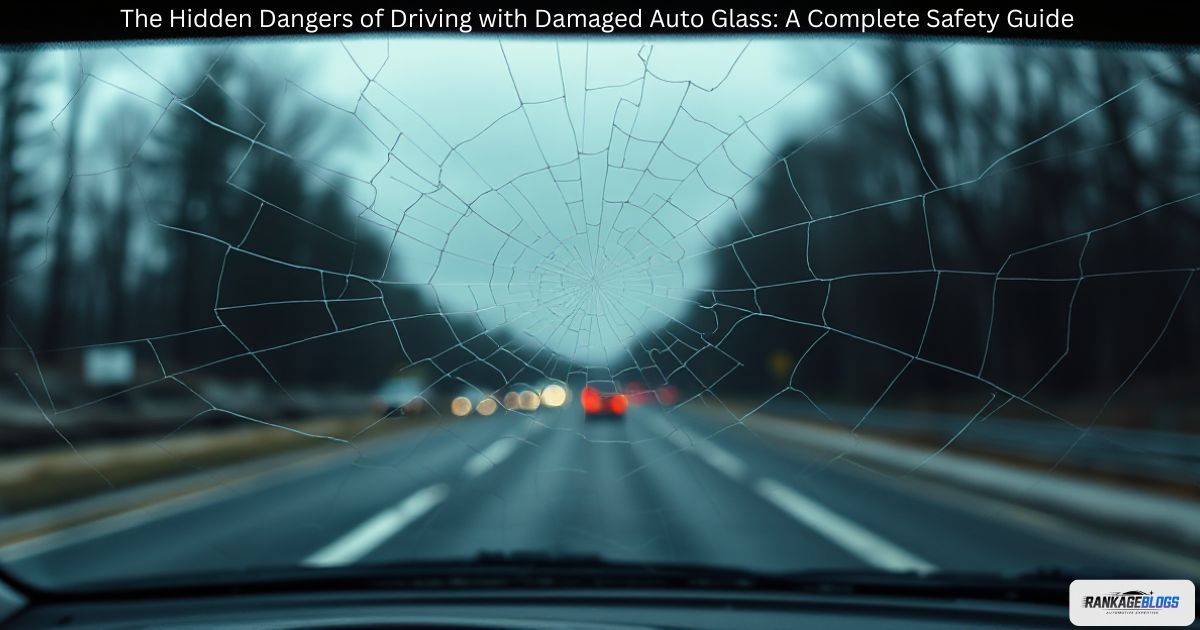Many drivers view a cracked windshield or chipped glass as a simple eyesore, a minor inconvenience they can fix later. This common misconception downplays the grave danger and serious safety risk lurking just beyond that spiderweb of glass. The truth is, your vehicle’s auto glass is a fundamental part of its structural integrity and a critical component designed to protect occupants.
Ignoring damaged auto glass compromises your entire safety ecosystem.
What begins as a small windshield chip can quickly escalate, leading to impaired visibility, faulty airbag deployment, and even a risk of ejection during a collision. Understanding these potential glass safety risks is the first step toward addressing damage and ensuring you are not unknowingly endangering occupants every time you drive.
The 5 Critical Safety Risks of Damaged Auto Glass
Your vehicle’s glass is engineered for protection, not just privacy. When compromised, it fails at its most vital tasks, turning a minor annoyance into a catastrophic safety concern. This section details the five most immediate and dangerous threats posed by damaged auto glass, explaining why auto glass repair is non-negotiable for your well-being on the road.
1. Compromised Structural Integrity & Weakened Crash Protection
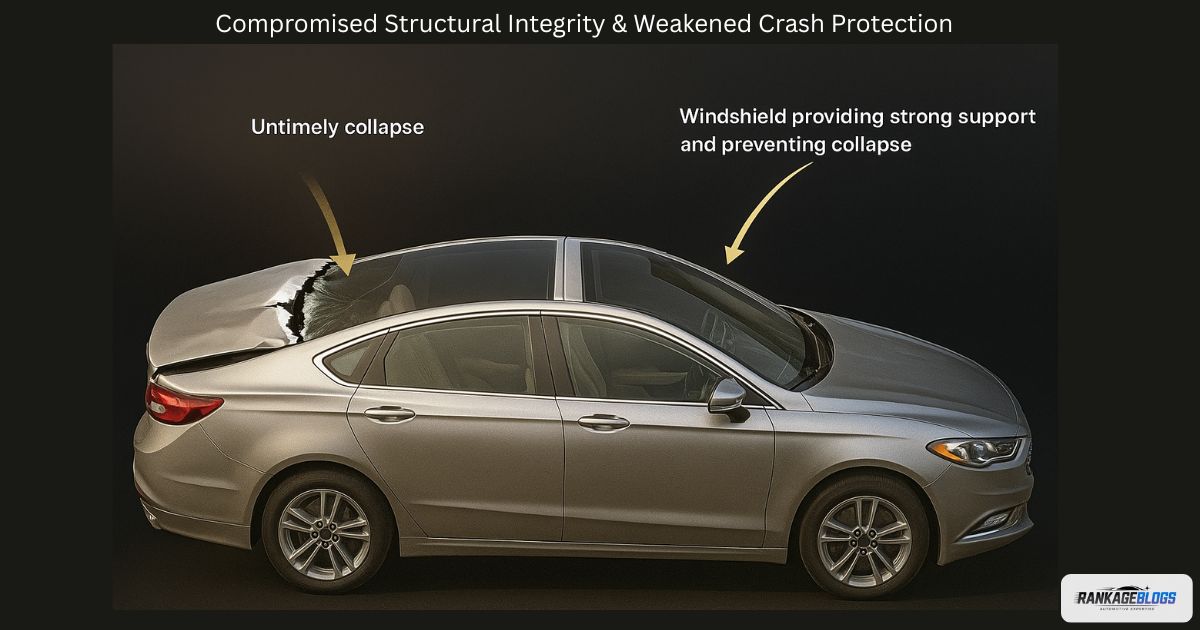
According to the National Highway Traffic Safety Administration (NHTSA), a properly installed windshield provides 45% of the structural integrity in a front-end collision and 60% in a rollover. A compromised windshield cannot properly distribute these impact forces, significantly increasing the risk of the roof collapsing.
How Cracks Affect Structural Integrity in Collisions:
In a collision, forces need to be distributed evenly across the vehicle’s frame. A crack creates a critical weak point, disrupting this force distribution.
Risk of Glass Shattering in Minor Accidents:
This failure can occur even in a minor accident, such as a low-speed fender-bender. The weakened crash protection exposes you to flying debris and glass shards.
2. Impaired Visibility and Increased Driver Distraction
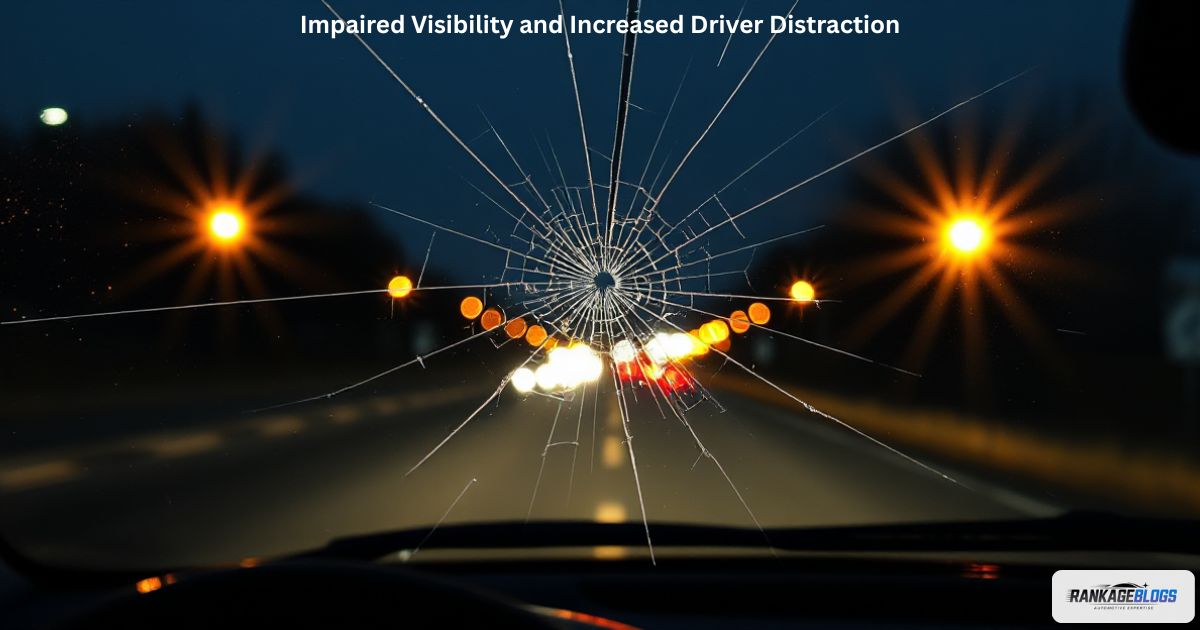
Even a small crack in your line of sight can cause light refraction and glare, creating a distortion that obstructs your view. This impaired visibility is not just an annoyance; it forces your brain to work harder to see around the flaw, leading to driver distraction and delayed reaction times. A study by the AAA Foundation found that windshield damage obscuring a driver’s view can increase stopping distance by up to 25 feet at highway speeds.
Reduced Visibility and Night Driving Hazards:
The problem is magnified at night. Cracks and chips scatter the light from oncoming headlights, creating blinding glare and starbursts.
3. Faulty Airbag Deployment and Increased Risk of Ejection
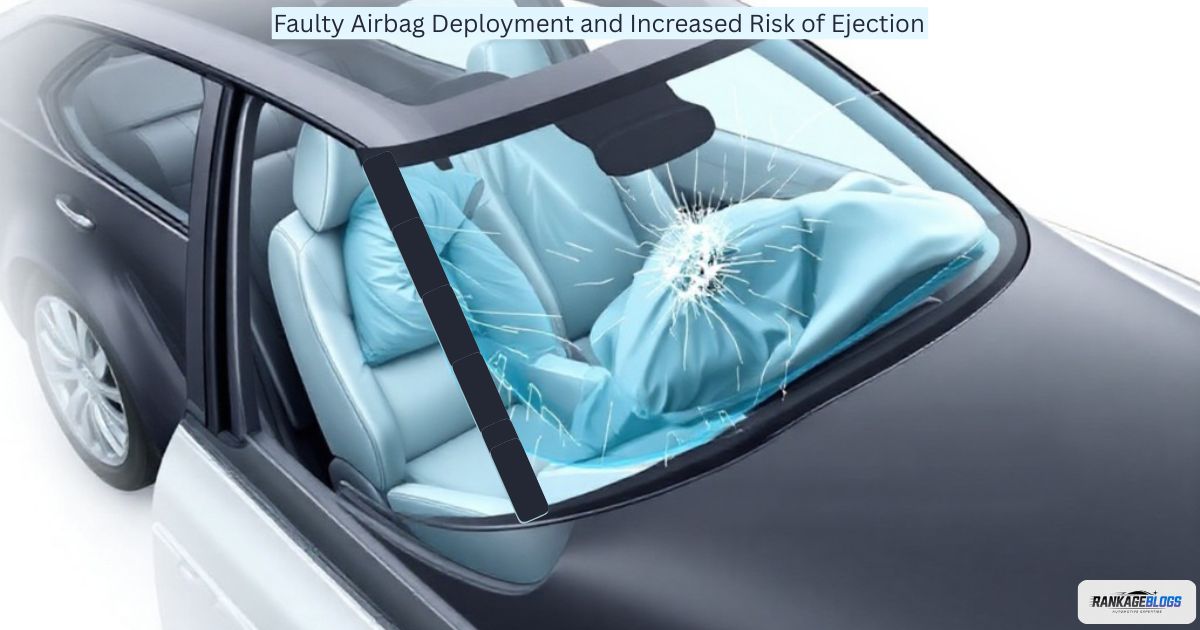
The passenger-side airbag is designed to use the windshield as a backstop. Upon impact, the airbag inflates and pushes upward against the glass. A damaged auto glass may shatter on impact and fail to act as this necessary support, leading to improper deployment. This malfunction drastically increases the risk of injury for the passenger.
Impacts on Airbag Deployment Timing:
The glass safety risks here are profound. A compromised windshield can alter the airbag’s trajectory and timing, reducing its effectiveness by up to 40%, according to automotive safety research groups.
4. The Compromise to Advanced Safety Systems (ADAS)
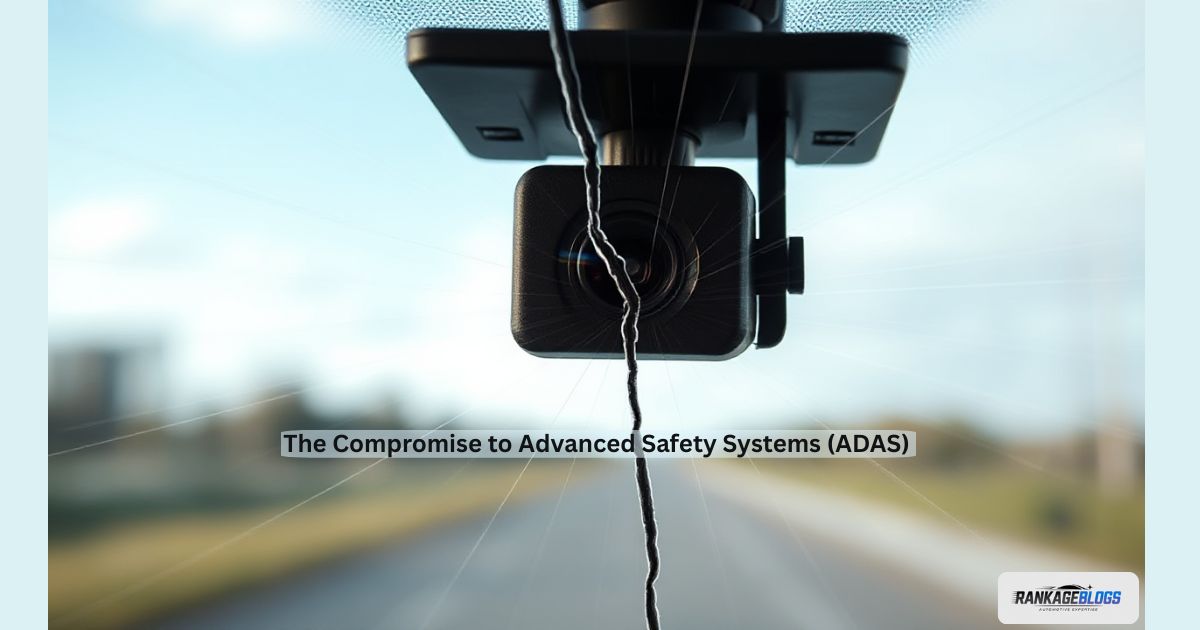
Modern vehicles rely on Advanced Driver Assistance Systems (ADAS) like automatic emergency braking. These features use windshield-mounted cameras and sensors that require a perfectly clear, calibrated view. A cracked windshield directly in the camera’s field of view obstructs its vision and can cause miscalibrations, turning a designed safety feature into a potential hazard.
Proper auto glass repair or windshield replacement must include ADAS recalibration, a critical step often overlooked. To fully understand why this calibration is a non-negotiable safety procedure, read our complete guide to ADAS calibration and its critical importance.
5. You’re a Magnet for Theft and Vandalism
A cracked or broken auto glass, especially on a side window, is an open invitation to burglars. It signals that your vehicle is vulnerable. The damage creates a structural weak point, making it easier for a thief to break the rest of the glass. This turns what might have been a simple repair into a costly replacement.
The Domino Effect of Neglecting Repairs
Beyond the immediate safety risks, a neglected chip or crack triggers a chain reaction of other problems. These secondary issues can lead to costly repairs that extend far beyond the glass itself. Understanding this domino effect highlights why timely repairs are a smart financial decision and a key part of auto glass safety tips.
Escalation of Damage: From a Simple Chip to a Costly Replacement
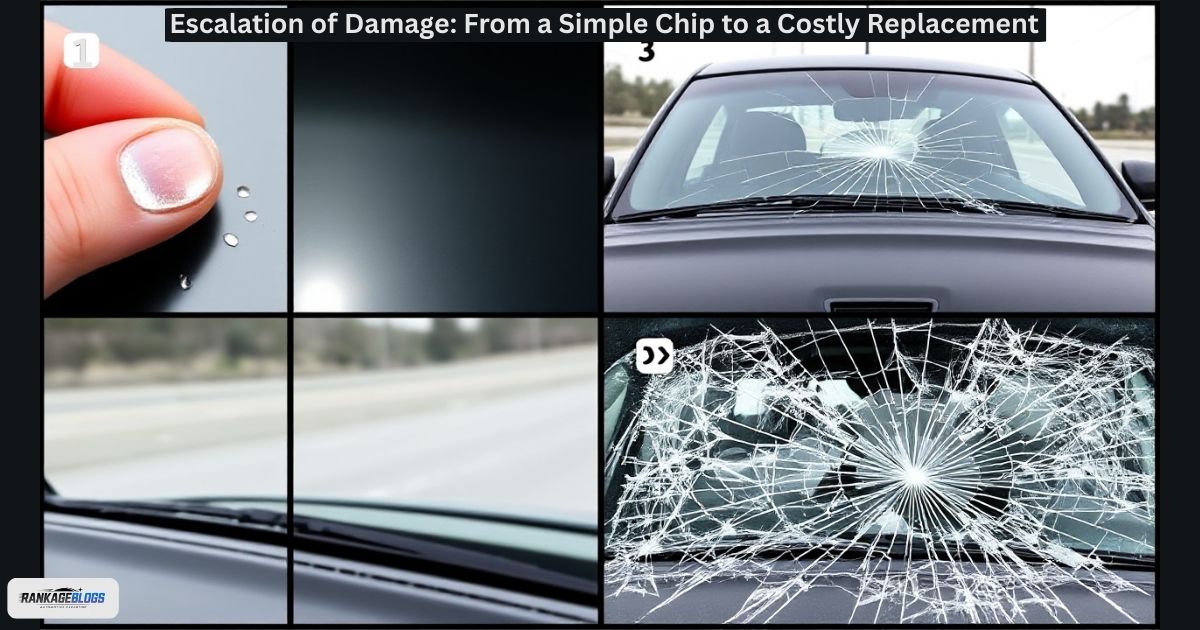
What starts as a tiny chip is rarely stable. Everyday driving stresses like temperature fluctuations and constant road vibrations create micro-movements that force a crack to spread.
How Small Chips Lead to Total Glass Failure:
Even a small chip can escalate rapidly, resulting in a complete windshield failure. This damage is relentlessly accelerated by everyday stresses like temperature fluctuations and constant road vibration.
The Science Behind Glass Weakening Over Time:
The edge of a crack is a “stress concentrator.” Forces from temperature changes and vibration cause microscopic fractures to spread.
How Vibration Makes Cracks Worse:
The constant vibration from everyday driving fatigues the glass at the edge of the crack, forcing it to spread.
The safest crack is the one that never happens. As part of a comprehensive safety strategy, proactively applying a protective layer can significantly reduce the risk of damage. Learn how these solutions work in our Auto Glass Protection Film & Coating Complete Guide.
Water Leakage and Interior Damage
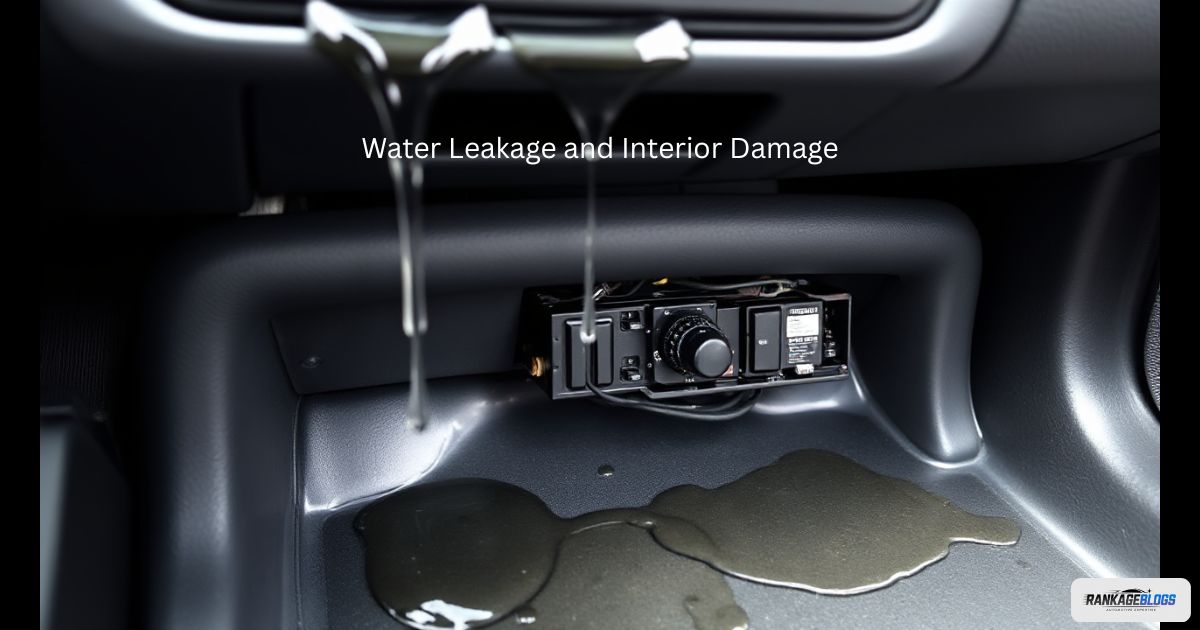
A crack can break the protective seal around your glass. This allows water leakage to occur during rain or car washes. Moisture can seep into door panels and the dashboard, causing mold growth and, more critically, damaging electronic systems. This can lead to electrical failure in components like power window motors or the airbag control module.
The Impact on Your Car’s Value and Appearance
A damaged windshield significantly detracts from your vehicle’s aesthetic appeal. For potential buyers, it’s a major red flag that suggests poor maintenance. This can directly translate to a lower resale value, often by 10-15%, far exceeding the original cost of a prompt auto glass repair.
Legal and Financial Repercussions You Can’t Ignore
Driving with damaged auto glass poses significant safety risks and can also lead to legal penalties and substantial financial consequences. Most states have strict road safety regulations regarding driver visibility.
It’s Against the Law: Fines and Penalties
In most jurisdictions, it is illegal to operate a vehicle with a cracked windshield that obstructs the driver’s view. Law enforcement can issue a traffic citation and a fine for this violation. For commercial vehicle drivers, DOT regulations are even stricter.
Legal Consequences of Unsafe Glass in Accidents:
If you are in an accident and your damaged windshield contributed to the severity of injuries, you could be found negligent.
How It Can Complicate Your Insurance Claims
Your insurance coverage may be affected. If an adjuster determines that your negligence in repairing known auto glass damage worsened an accident’s outcome, it could lead to complications. However, many comprehensive insurance policies include glass coverage, often with a low or zero deductible.
The True Cost: Repair vs. Replacement
Ignoring a small chip is a financial miscalculation. The repair costs for a small flaw are minimal, especially with insurance. However, if that damage spreads, the costs are significantly higher. Addressing damage promptly is the most economical path.
Average Cost Comparison: Repair vs. Replacement
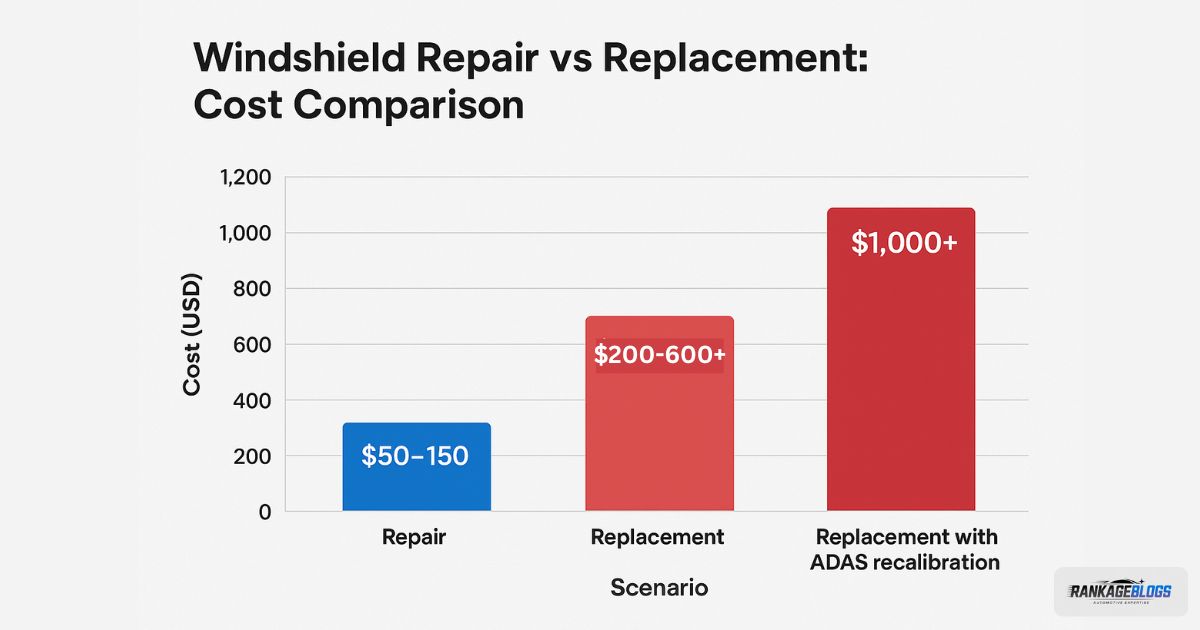
Service | Average Cost (Without Insurance) | Typical Insurance Deductible |
Windshield Repair | $50 – $150 | Often $0 |
Windshield Replacement | $200 – $600+ | $50 – $500+ |
Immediate Action Plan: What to Do Right Now
Discovering damage can be stressful, but knowing the right steps to take empowers you to prevent further glass damage and safety risks. This action plan provides a clear, step-by-step guide from the moment you notice the damage to getting it professionally resolved.
Why Makeshift Covers Can Make Things Worse
While it might be tempting to cover a broken auto glass with tape or plastic, these temporary measures are dangerous. They can detach while driving, obstructing your view further or becoming a projectile for other drivers.
Your First Steps After Damage Occurs
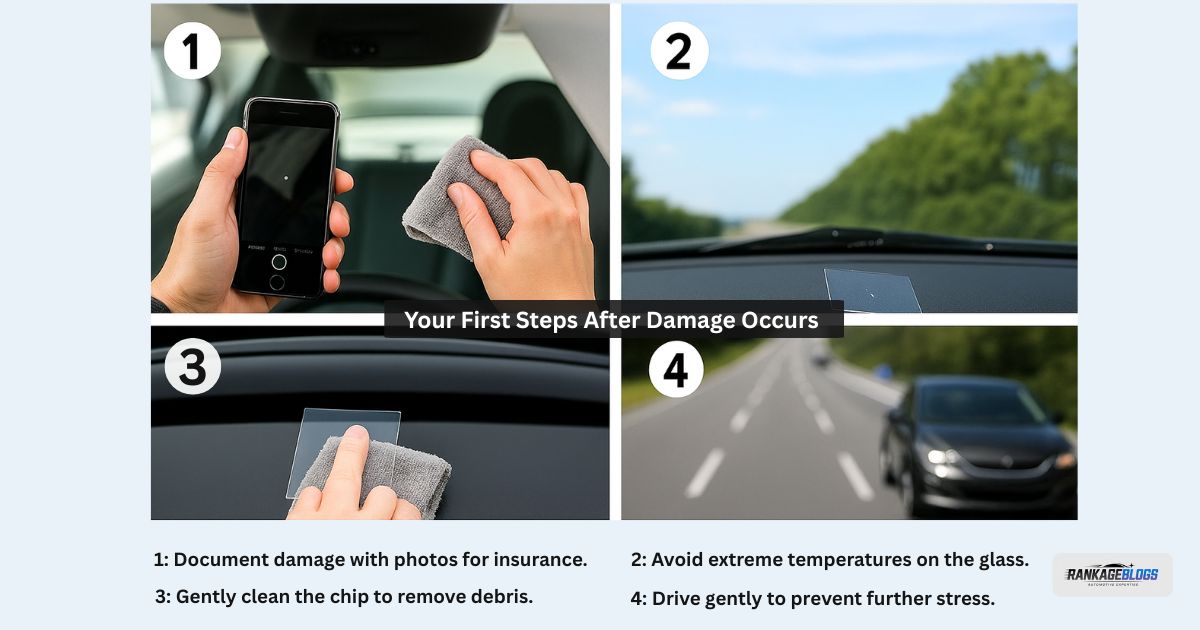
- Document the damage with clear photos for your insurance claim.
- Clean the area around the chip gently with a soft cloth to remove any debris.
- Protect the glass from extreme temperature changes (like blasting the AC or defroster on the crack).
- Drive carefully to avoid stressing the glass; avoid slamming doors and driving on rough roads.
Making the Right Choice: Repair vs. Replacement
The right solution depends on the damage’s size, type, and location.
- Repair: Usually possible for chips smaller than a quarter.
- Replacement: Necessary for longer cracks or damage at the edge of the glass.
Seeking Professional Assistance: Why DIY Repairs Aren’t the Answer
While DIY repair kits are available, they are a gamble. Professionals use high-quality resin and equipment. Their work often comes with a warranty and ensures your safety standards are met. Seeking professional assistance guarantees the job is done right.
Emergency Steps for Sudden Glass Failure
A sudden shatter is frightening, but staying calm is key.
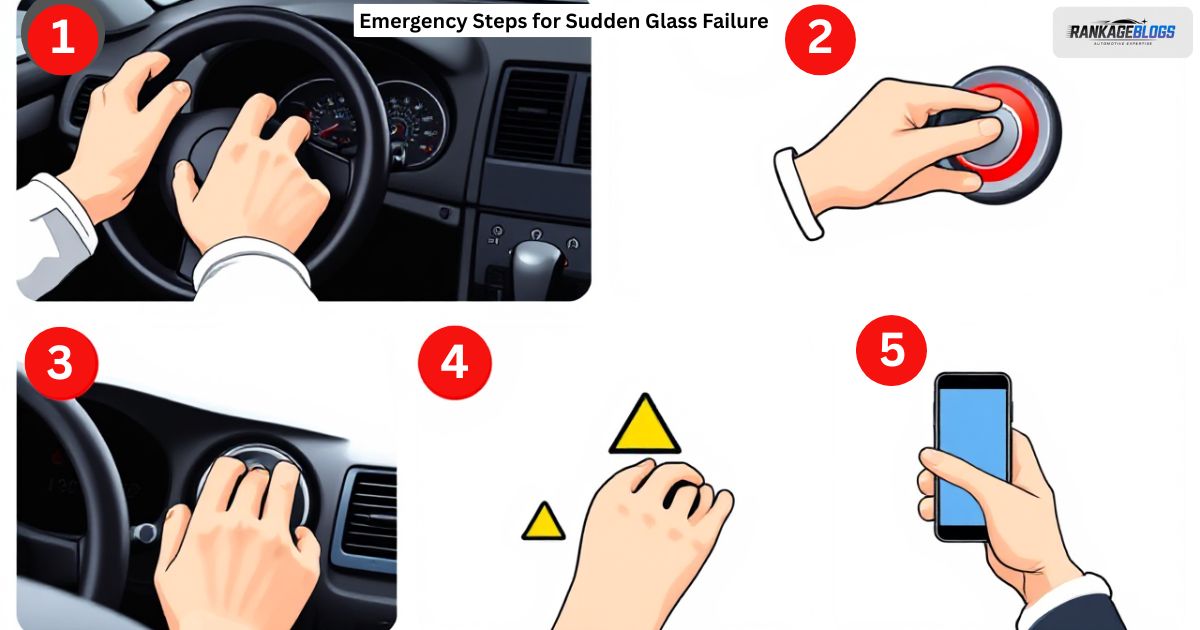
Steps to Take During Sudden Glass Failure:
- Don’t panic. Grip the steering wheel firmly.
- Slow down gradually.
- Activate your hazard lights.
- Safely pull over.
- Call for roadside assistance.
Conclusion: Safety Is Not Optional
Your vehicle’s glass is a critical safety component, not a convenience feature. The dangers of driving with damaged auto glass—from catastrophic structural failure and impaired visibility to legal and financial repercussions—are far too great to ignore. Addressing damage with prompt auto glass repair or windshield replacement—including the essential ADAS calibration for modern vehicles—is a straightforward yet crucial step in safeguarding occupants. Don’t delay; your safety is not optional.
FAQs
How long can I safely drive with a cracked windshield?
There is no safe amount of time; repair it immediately to avoid compromising safety.
In what states is it illegal to drive with a cracked windshield?
It is illegal in all states if the crack obstructs the driver’s view.
What’s the worst that can happen with a cracked windshield?
You could be ejected during a rollover accident or the roof could collapse.
Can I get pulled over for a broken windshield?
Yes, and you can receive a ticket for an obstructed view or equipment violation.
Can a cracked windshield shatter while driving?
Yes, from stress, impact, or temperature changes, causing a sudden loss of visibility.
Who pays for windshield damage?
You or your insurance company; comprehensive coverage often covers it with a low deductible.

